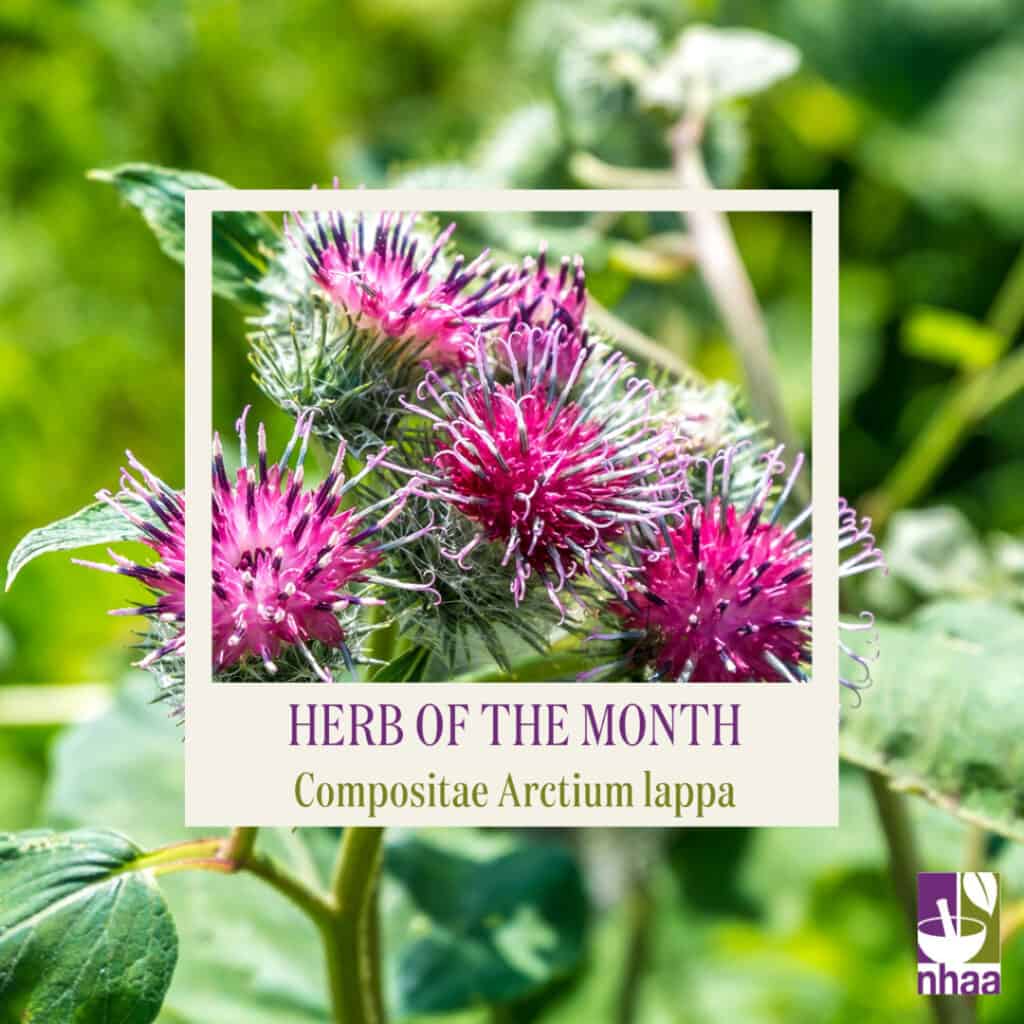
🌿This month’s herb of the month is Burdock, or Compositae Arctium lappa.
🌿 Family: Compositae Arctium lappa (Burdock) is a biennial that is dormant in winter.
🌿 Generally, Burdock is harvested for the roots in autumn or spring before flowering and fruiting in summer, the fruits are round balls of seed resembling a sticky bur.
🌿 The leaves and seeds have also been used and are gathered in the first year. Burdock roots are a culinary delight in Japan (Gobo), due to the various nutrients, including iron, calcium, copper, iodine, silicon, sulphur, and zinc plus vitamins A, C, E, and high fibre.
🌿 Active constitutes of Burdock vary depending on the parts of the plant used, the root comprises inulin, phenolic acids, polyacetylene compounds, essential oil, and bitter glycosides while the leaf, fruit, and seed comprise sesquiterpene lactones, lignans, and phenolic acids.
🌿 Traditionally acknowledged as having a direct influence on the blood and mucous membranes, Burdock has long been utilized for depurative, diuretic, and diaphoretic actions facilitating the emunctories in ailments such as skin conditions gout, rheumatism, cystitis, and even a cold.
🌿 Currently, research is exploring the antioxidant, antimicrobial, and anti-inflammatory actions of Burdock. Despite its widespread use, no interactions or safety issues are reported and only minimal side effects. However, quality and adulteration issues are highlighted due to the roots closely resembling the roots of Atropa belladonna.